With the M9, the young company Instinctiv offer a trail bike that rolls on 29″ wheels and changes gears with a Pinion gearbox. That’s supposed to ensure a low centre of gravity and, together with capable geometry, provide supreme descending stability. We tested the Instinctiv M9 and tell you how it performed.

The Dutch bike brand Instinctiv, founded in 2017, specialise in carbon trail and enduro bikes fitted with Pinion gearboxes. The development team can proudly look back on 15 years of experience in the design and development of high-end products: it has been involved in the planning and development of mobility products such as scooters, wheelchairs and bicycles, as well as medical equipment and tools. Like most manufacturers, the frames are produced in Asia. The bikes are then assembled by the in-house team of mechanics at the headquarters in Amsterdam.

The M-Series from Instinctiv
Instinctiv’s portfolio currently consists only of the M series, which the company launched in 2017. This comprises 3 models, the M9, M97 and the M7. All models feature the same carbon frame with its specially developed rear triangle and a Pinion gearbox integrated into it. The rear triangle is designed to reduce the sprung mass to an absolute minimum thanks to the small rocker and upside-down shock mount. Where the models differ is in suspension travel and wheel size. The M9 rolls on 29″ wheels at the front and rear and has 150 mm travel at the front and 140 mm at the rear .The M97 has mullet wheels with 150 mm travel at both ends. The M7 has 160 mm travel at the front and 150 mm at the rear and is equipped with 27.5″ wheels. You can select your model of choice and update the spec to suit your preferences in the configurator.

What are the advantages and disadvantages of a Pinion gearbox?
At first glance, the black box may look like an eMTB motor but, in fact, it is a Pinion gearbox. Inside are two sub-transmissions that combine to offer 12 gears, replacing a conventional derailleur.

The only thing the transmission has in common with a motor is its central and low centre of gravity. By eliminating the cassette and rear derailleur, the unsprung mass at the rear wheel is reduced. Only a tensioner by the chainring remains. As a result, the suspension should respond more sensitively on the trail and sit more settled on the trail. Steep climbs could also be easier to master than with a conventional derailleur due to the higher, 600% gear range. The closed system, which is protected from water and dirt by seals, also requires less maintenance and there’s no rear derailleur dangling down to damage.

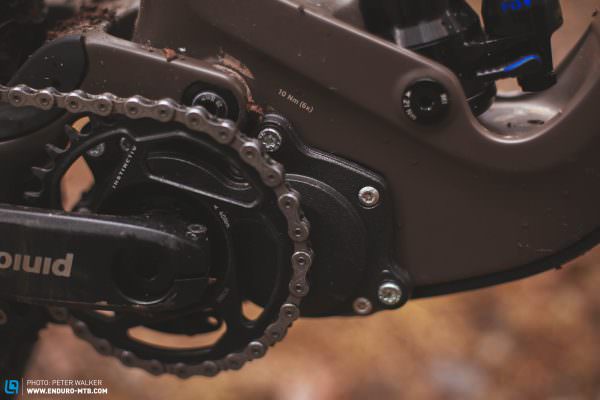
But the Pinion gearbox also entails some negatives. Due to the design, there’s more dead travel in the cranks because of the extra freewheel in the gearbox. This can be annoying on technical uphills when you want to be able to get the power down immediately. In addition, when shifting into a lower gear, you need to ease off the pedals slightly as otherwise the gear doesn’t engage. Shifting is done by a twist grip or a thumb trigger. However, compared to a conventional gear lever, more force is required to operate the trigger.

The Instinctiv M9 2022 in detail
The Instinctiv M9 hardly differs in looks from its M97 and M7 siblings, sharing the same generous seat and chainstay protector, which protects the frame and ensures quiet on the trail. The down tube is also well protected. On the underside of the top tube, a tool mount is compatible with most tool straps. The frame’s design also offers enough space for a bottle cage.
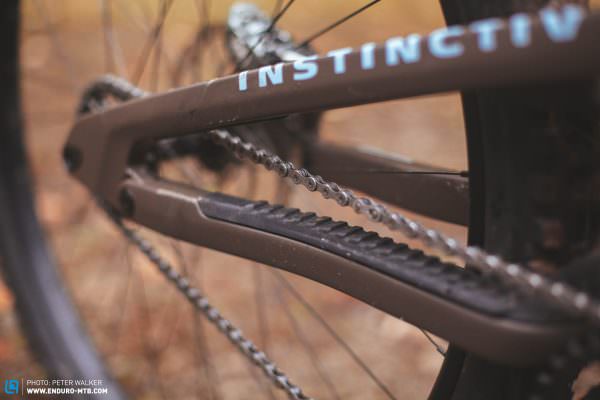

All cables are routed internally and are well-secured at the cable ports. Only at the base of the down tube are the cables briefly exposed where they attach to the Pinion gearbox. In addition, two cables are necessary for the shifter, which makes for a somewhat untidy look on the cockpit. The Acros BlockLock headset limits the steering angle, protects the top tube from damage in event of a crash, and avoids over-stressing the cables.

What options does the configurator offer and how much does the Instinctiv M9 cost?
The configurator offers limited customisation of the bike. In addition to choosing from seven rather plain colours, you can change the rear sprocket, shifters, wheels, cockpit, brakes and saddle. For the brakes, you can choose between two models from MAGURA but there are no SRAM or SHIMANO options available. Neither a saddle nor pedals are included in the standard spec but can be selected in the configurator for an additional charge. Full builds start at € 7,620 and the frame is available from € 4,140 with the Pinion gearbox installed. The bikes can also be test ridden and purchased at dealers or ordered online.

The spec of our Instinctiv M9 2022 test bike
Our size L test bike weighs 16.00 kg but comes equipped with RockShox suspension that isn’t available in the configurator. At the front, a 150 mm Lyrik Ultimate suspension fork with the excellent Charger RC 2.1 damper makes it possible to adjust the high- and low-speed rebound and compression. At the rear, the RockShox Super Deluxe Ultimate air shock only allows adjustment of the low-speed rebound and compression, as well as offering a lockout for the uphills.
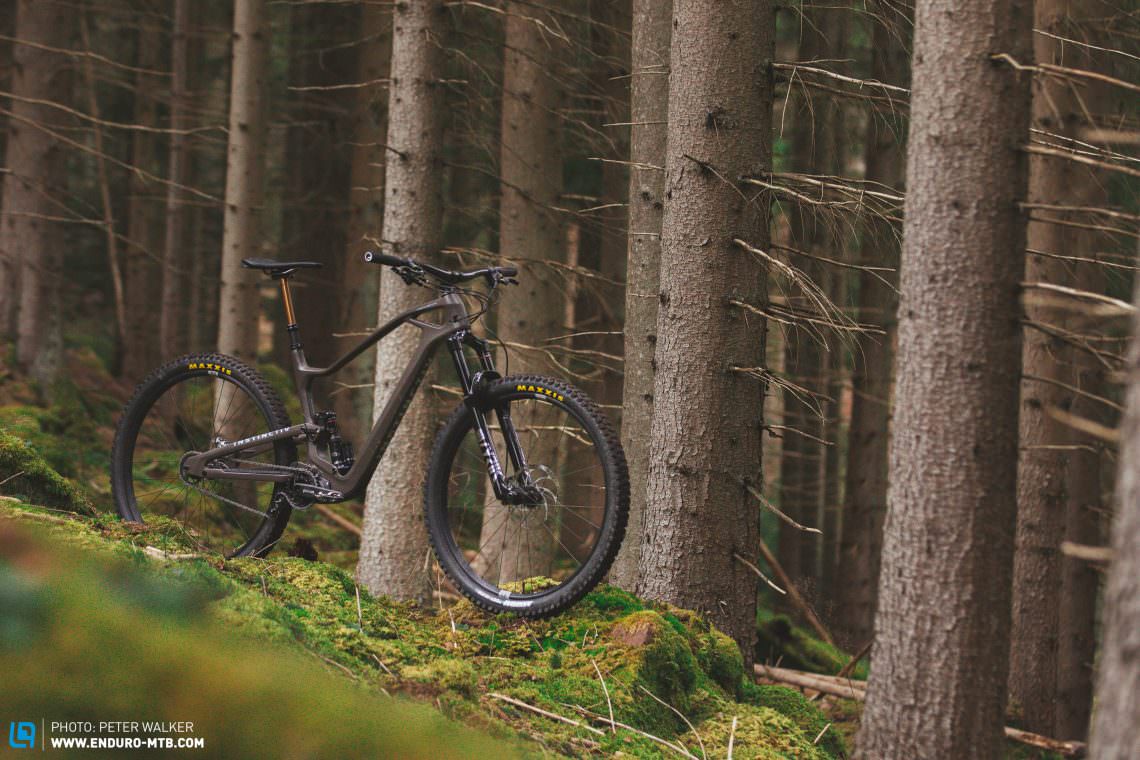


The MAGURA MT7 Pro four-piston brakes are commonly found on downhill and enduro bikes. They offer tool-free reach adjustment. Instinctiv have used MAGURA Storm HC rotors with 203 mm item at the front and 180 mm at the rear. The small brake disc at the rear is undersized for heavy riders or on long descents – we recommend sizing up.

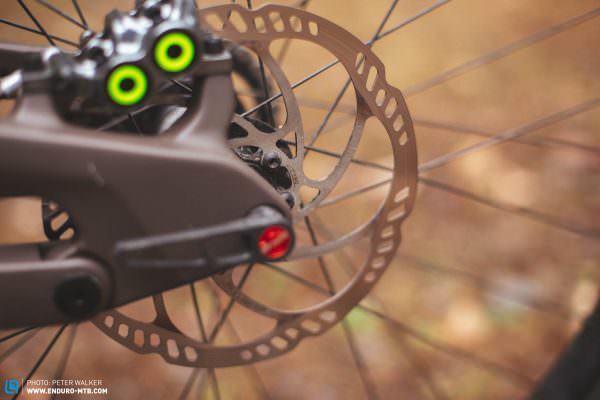
The cockpit consists of a 77designz 1 Piece stem with a length of 35 mm, which, as the name suggests, is made from just one part. It holds an 800 mm wide, 25 mm rise Beast Components UD Riser carbon. The shifter offers a less tidy look with the two shift cables on the handlebars, adding to the other cables from the dropper remote and the brakes. With its 150 mm stroke, the FOX Transfer dropper post has limited travel, unnecessarily restricting freedom of movement.
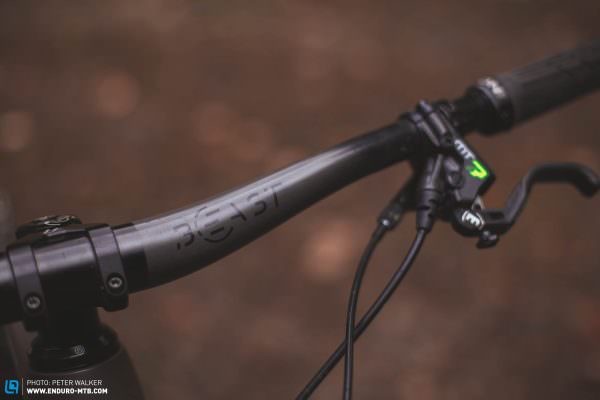

Our test bike rolls on Crankbrothers Synthesis Enduro carbon wheels. These are combined with tires from MAXXIS, with a 2.5” ASSEGAI at the front and the 2.4” DISSECTOR at the rear, both of which come in the puncture-prone EXO casing. Unfortunately, this doesn’t do justice to the downhill-oriented nature of the M9 and we advise fitting more robust tires which will let you generate more grip with lower air pressures and better protect the carbon wheels from impacts. At the same time, you should also install a softer rubber compound at the front, the front tire comes in the harder dual compound.

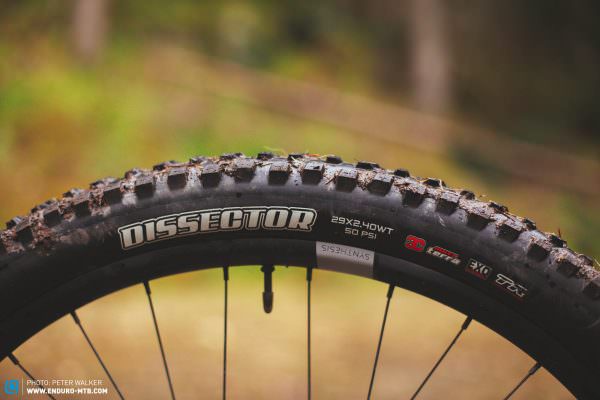
Instinctiv M9
€ 7,620
Specifications
Fork RockShox Lyrik Ultimate 150 mm
Rear Shock RockShox Superdeluxe Ultimate 140 mm
Seatpost FOX Transfer 150 mm
Brakes MAGURA MT7 Pro 200/180 mm
Drivetrain Pinion C1.12 1x12
Stem 77designz One Piece 35 mm
Handlebar Beast-Components UD Riser 800 mm
Wheelset Crankbrothers Synthesis Enduro 29"
Tires MAXXIS Assegai EXO Dual/Dissector MaxxTerra EXO 2.5"/2.4"
Technical Data
Size M L XL
Specific Features
Tool Mount

The geometry of the Instinctiv M9
Instinctiv offers the M9 in just three frame sizes from M to XL. This covers riders between 165 cm and 202 cm tall. The size L model we tested has a 486 mm reach and 624 mm stack, with the steps between the sizes offering sensible differences. The steering angle of 64.5° is average for a trail bike. The seat tube length of 460 mm isn’t all that short and freedom of movement is further restricted by the short-stroke seat post. The chainstay length doesn’t change across the sizes, measuring in at 445 mm.
| Size | M | L | XL |
|---|---|---|---|
| Top tube | 605 mm | 642 mm | 678 mm |
| Seat tube | 430 mm | 460 mm | 460 mm |
| Head tube | 110 mm | 120 mm | 135 mm |
| Head angle | 64.5° | 64.5° | 64.5° |
| Seat angle | 76° | 76° | 75.9° |
| Chainstay | 445 mm | 445 mm | 445 mm |
| BB Drop | 26 mm | 26 mm | 26 mm |
| Wheelbase | 1.227 mm | 1.265 mm | 1.303 mm |
| Reach | 452 mm | 486 mm | 518 mm |
| Stack | 615 mm | 624 mm | 637 mm |
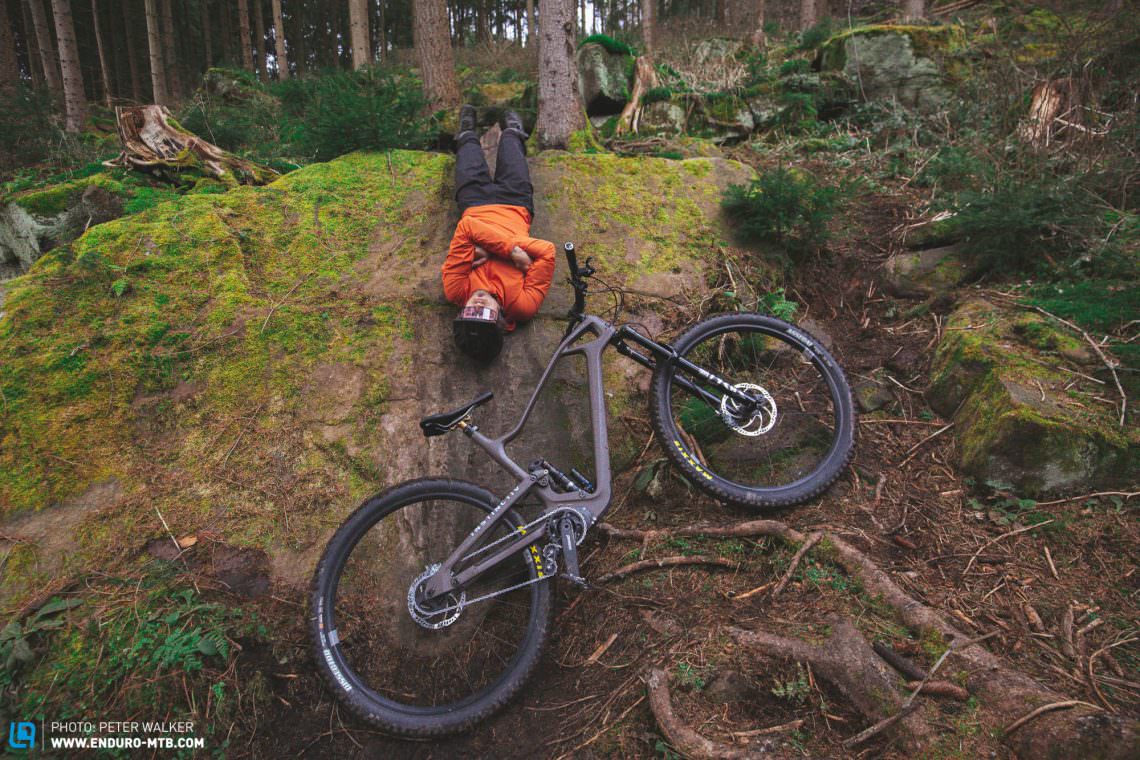
The Instinctiv M9 2022 on the trail
If you aren’t riding in a bike park where you can rely on the lift for the uphill, you have to get up under your own steam. Doing so, you sit slightly stretched, though comfortable and central, even on steep uphills. This means that you can always keep enough weight over the front wheel which always stays under your control. The Pinion gearbox also reveals its strengths here: where others have to start pushing their bike, you simply shift down another gear. The firm rear end hardly bobs in open mode and offers good traction uphill, especially on technical sections. It was never necessary to reach for the lockout switch while pedalling. However, when shifting into a lower gear you have to ease up on the pedals as otherwise the next gear won’t engage. Conversely, when shifting up this isn’t a problem, and you can happily keep pedalling. According to Pinion, the gearbox needs just under 1,000 km of riding before running at its smoothest. Our test bike exhibited a bit of a grinding feeling when pedalling, unlike anything you would be used to from a conventional derailleur.


Downhill, the M9 inspires from the first few metres with stable handling thanks to the low centre of gravity and balanced weight distribution between the front and rear. That’s helped by the central position on the bike. Thanks to the long wheelbase, the bike remains settled, especially at high speeds and on steep descents and in rougher terrain. When the going gets steep, you feel comfortable on the Instinctiv M9 thanks to the long wheelbase. However, freedom of movement is restricted by the short stroke of the dropper, so taller riders should think about upgrading this component. However, in narrow sections and tight corners, you’ll notice the length of the bike, which requires a lot of physical effort to manoeuvre and isn’t particularly agile.
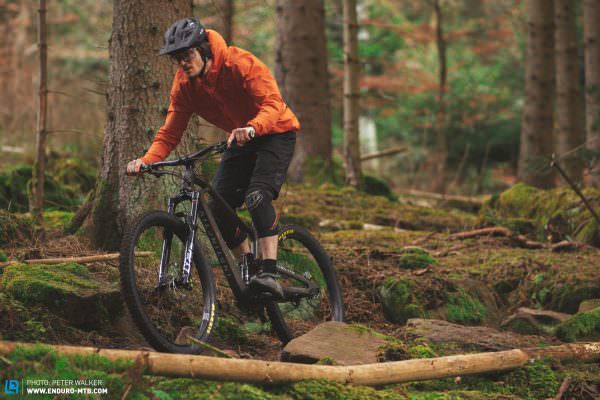

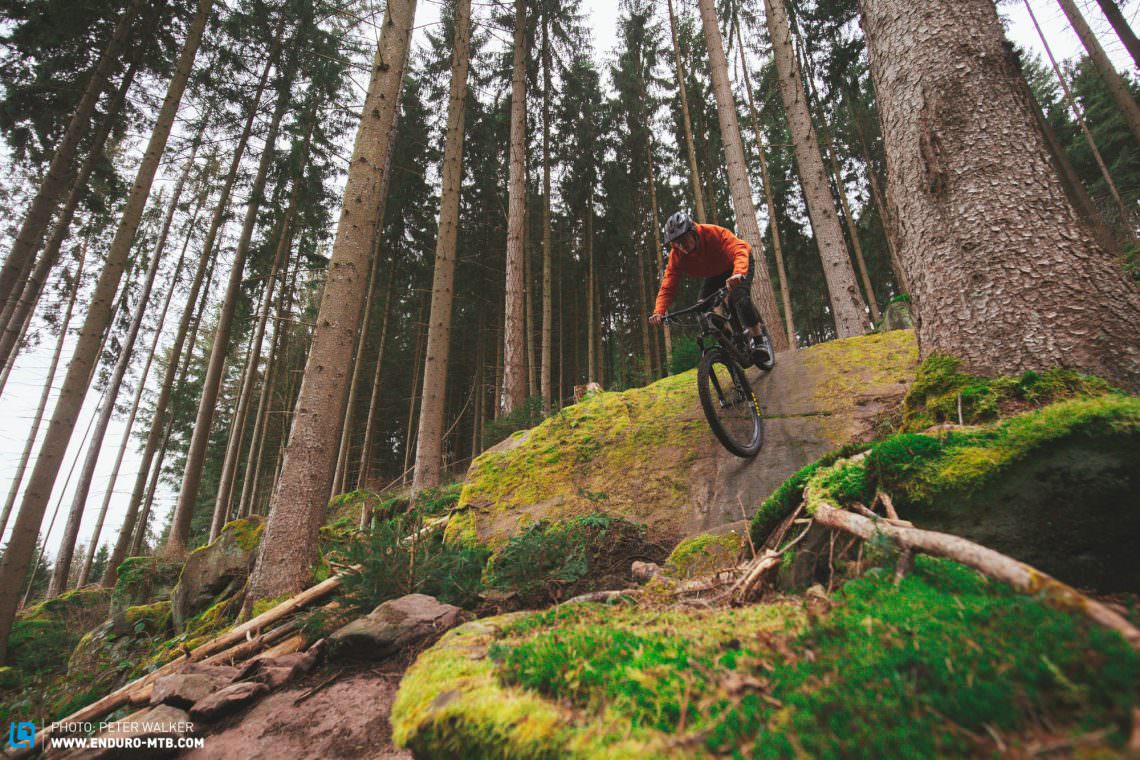
Conclusion on the Instinctiv M9
The Instinctiv M9 scores points with its plush suspension and central riding position. The Pinion gearbox ensures a low centre of gravity and is beautifully integrated into the frame. However, the configurator doesn’t provide many customisation options. Due to the limited dropper travel, freedom of movement suffers when riding downhill. However, if you are looking for a bike without conventional derailleur gears, you will find a coherent overall concept here.
Tops
- balanced and plush suspension
- central and low centre of gravity
- reduced unsprung mass
Flops
- 150 mm travel dropper restricts freedom of movement
- tires don’t do justice to the bike's potential
For more information on the bike, visit Manufacturer’s website
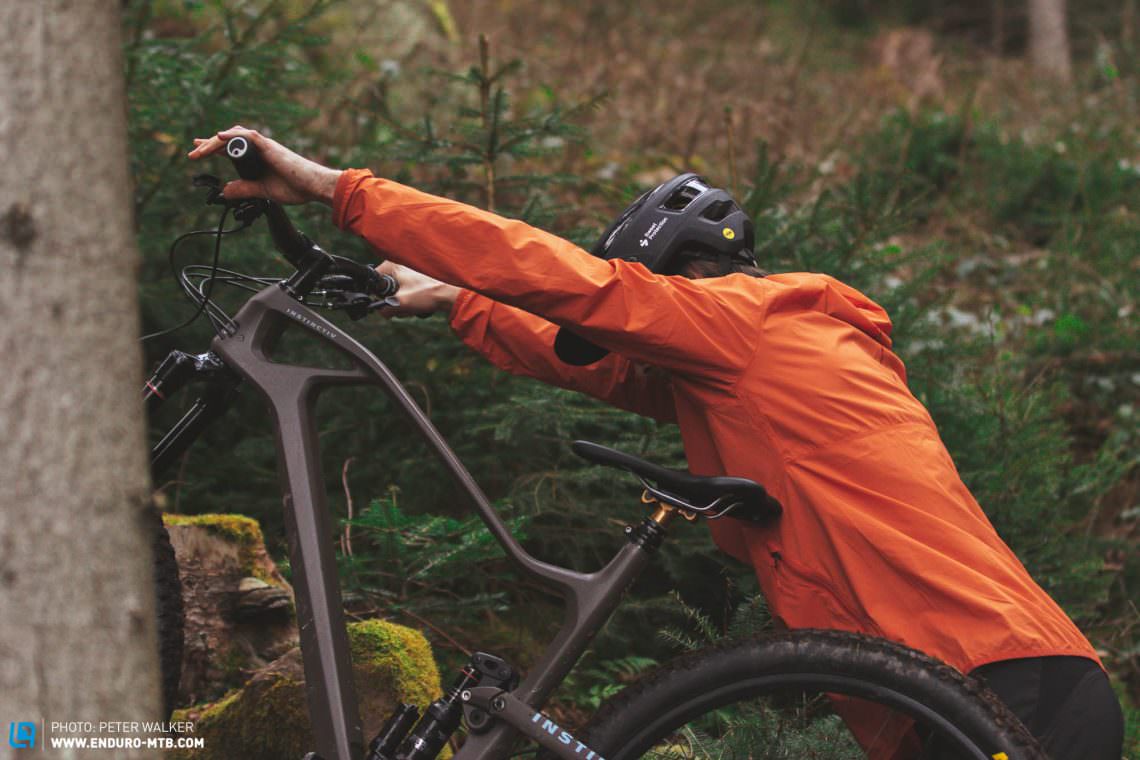
Did you enjoy this article? If so, we would be stoked if you decide to support us with a monthly contribution. By becoming a supporter of ENDURO, you will help secure a sustainable future for high-quality mountain bike journalism. Click here to learn more.
Words: Mike Hunger Photos: Peter Walker









